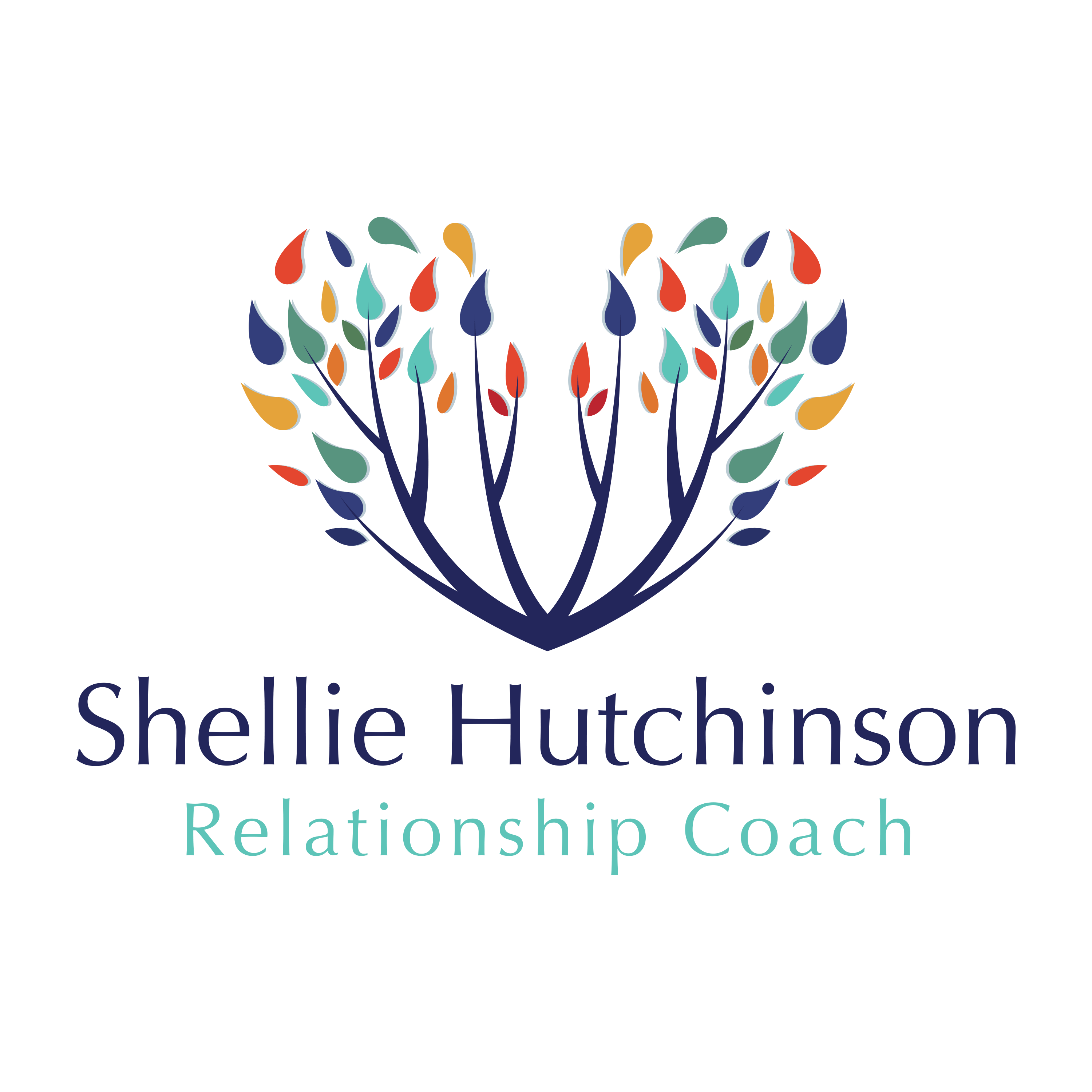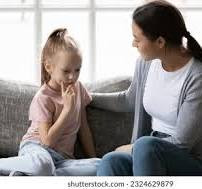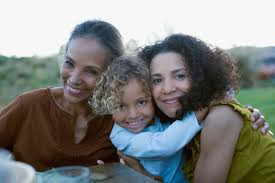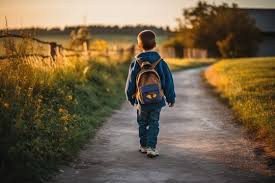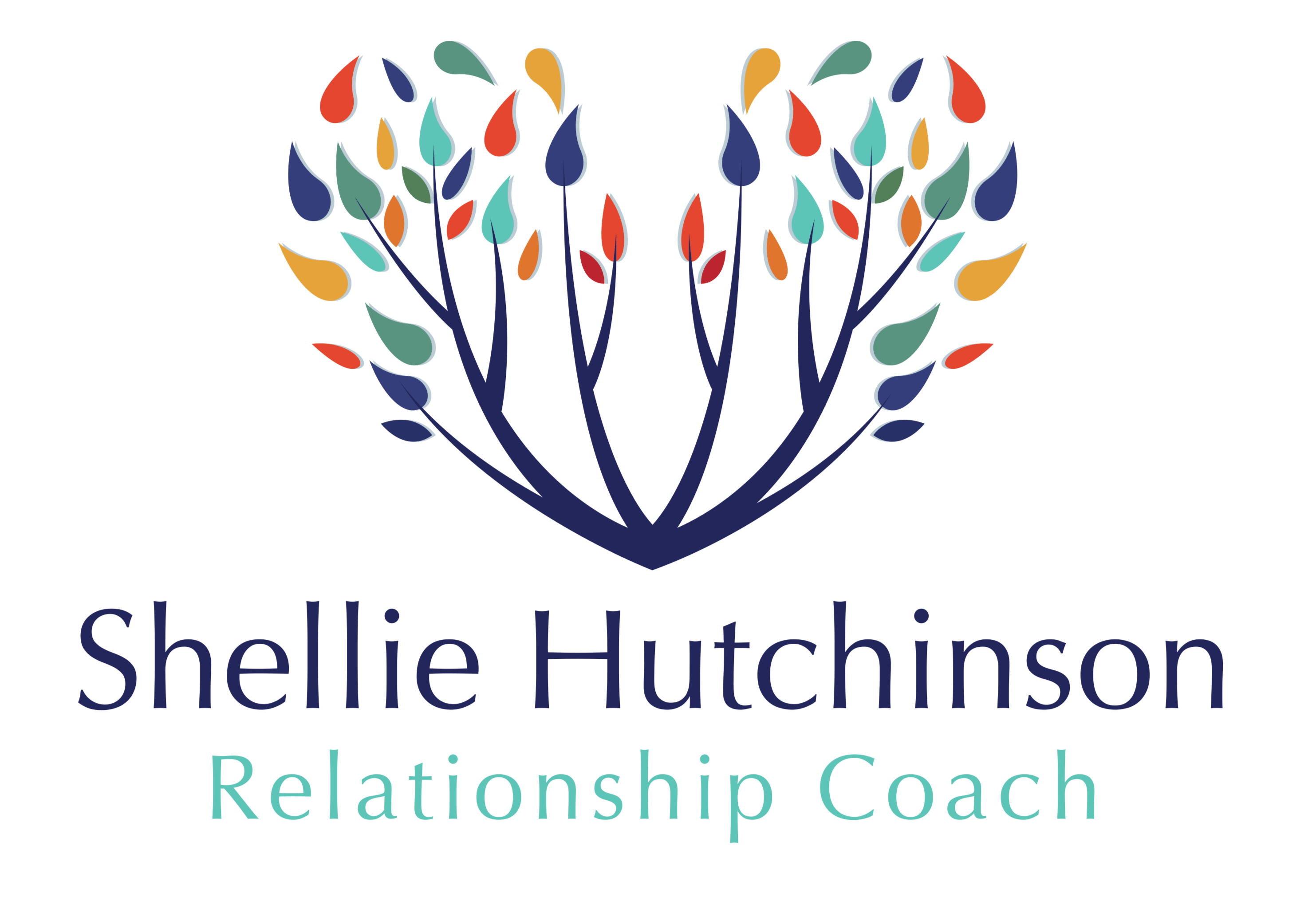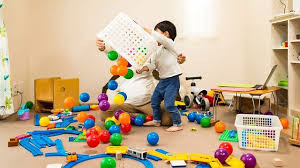
Years ago, our move to Florida brought with it a few adjustments, including the way our kids played. We left behind a classic 'playborhood', where kids would gather outside every day and ride bikes and scooters, play tag and sports, without much adult supervision. When we started planning our move, it didn't cross our minds that not all neighborhoods were 'playborhoods''. We did our research and learned that there were numerous kids in the area, and a lot of the yards were home to play gyms or trampolines. The neighborhood we choose even had its own playground and tennis and basketball courts.
Once there, however, we noticed the neighborhood was consistently desolate of kids playing outside. I started reaching out to parents and learned that peer play-time was almost always scheduled and supervised by parents. This is how I learned the term 'play-date'. And finding time to play with these very busy and very scheduled kids wasn't easy. So our boys played a lot with each other. We encouraged them to play outside and designated an area of the house for their play. This play space was often scattered with legos, lightsabers, and hot wheels. But it was their space and play they did. Once a family friend was over for dinner. After dinner, the boys left to play and the three of us sat outside talking. At one point our friend interrupted the conversation and stated that he just needed to make sure "this was normal". He was referring to the loud ruckus the boys were making. My husband and I hadn't even noticed it. We assured him it was very normal.
As parents, the sight of toys scattered across the room and the constant background noise of shrieks, giggles, stomping and loud voices, can be overwhelming. It’s easy to feel stressed when your home transforms into what appears to be a disorderly jungle gym. However, amid this mess lies the profoundly valuable chaos of play. When parents attempt to remove the chaos of play from their lives, they are inadvertently disrupting the development of their child. Children who lack regular free-play are at risk for increased worry and anxiety and are often less tolerant of the world and it's challenges. Not enough physical activity can disrupt sleep patterns and focus as well.
Here's how your kids benefit from the chaos of play:
Play is a fundamental part of childhood learning. Through imaginative play, children develop critical thinking and problem-solving skills. Whether they are building complex structures with blocks or engaging in make-believe scenarios, play stimulates brain development and helps children learn to plan, communicate, and execute their ideas.
Playing with others teaches kids how to interact socially. They learn the importance of sharing, negotiation, and empathy. These interactions help them build the foundation for strong relationships in the future. Those pretend tea parties and collaborative LEGO castle constructions are more than just passing the time—they're essential social skill-building exercises.
Play allows children to express their feelings and work through emotions in a safe environment. Dramatic play scenarios can help kids process what they experience in real life, including fears and anxieties. This emotional rehearsal builds resilience and emotional intelligence for the real challenges of life.
From climbing playground structures to running around the yard, physical play is crucial to a child's health. It enhances motor skills, coordination, and overall physical fitness. In a world where screen time is steadily increasing, encouraging active play is more important than ever.
Unstructured playtime fosters creativity. Give a child a cardboard box, and suddenly it becomes a spaceship, a fort, or a submarine. This ability to think outside the box (literally and figuratively) is a vital skill that will benefit children in all areas of life.
Accepting and even celebrating the chaos of play can change your perspective as a parent. Here are some tips for managing the stress that often accompanies a playful home. Embrace the mess by:
Establishing specific areas in your home where play is encouraged. This can help contain the mess and make clean-up more manageable. A well-organized play zone can still be full of activity without overtaking your entire living space.
While it's important to allow unstructured playtime, setting limits on when and where certain types of play can happen can help maintain a sense of order. Establishing routines for tidying up can also teach your child responsibility and the importance of cooperation.
Instead of focusing on the disorder, try to see the creativity and learning happening within the chaos. Remind yourself that this phase of life is temporary, and the day will come when the toys are gone, and the house is quiet.
Here's the takeaway: The chaos of childhood play may seem like a storm in your living room, but it is also a whirlwind of learning, growth, and joy. By recognizing the immense value of play, as a parent you can cultivate an environment that nurtures your child's development while maintaining your own peace of mind. Embrace the chaos, and remember that the world of play is the work of childhood.

We've all been there. One moment your teen is asking politely for an extra hour of screen time, and the next, it feels like they are employing every trick in the book to bend the rules. It's easy to label such behavior as manipulation, but have you ever wondered what's really going on with your teenager in these moments? There's more there than you might think.
Teenagers are in a fascinating phase of growth and discovery, both physically and emotionally. Their attempts at persuasion, negotiation, and, yes, what sometimes feels like manipulation, are often part of a broader developmental journey.
Let's pull back the curtain to better understand what's really happening behind the scenes.
Cognitive Development: Testing Limits and Boundaries
Adolescence is a critical period for cognitive development. During these years, teens are honing their reasoning skills and beginning to think more abstractly. When they argue their case for extending curfews or skipping chores, they’re not just trying to wear you down—they're practicing the art of negotiation and learning the nuances of cause and effect.
Emotional Growth: Seeking Independence
Every teenager yearns for independence; it’s a natural part of growing up. What appears to be manipulation might instead be developmental steps towards asserting their autonomy. They are learning to express their desires, whether it's about making their own decisions or seeking more privacy. While it’s essential to set boundaries, recognizing this quest for independence can provide a balanced perspective on their behaviors.
Social Skills: Understanding Relationships
Teenagers are navigating the complex web of social interactions. When they attempt to influence you, they are also testing and refining their social skills. Understanding hierarchy, empathy, and effective communication are part of this equation. They’re learning what works, what doesn’t, and what crosses the line—key lessons that will serve them well in adulthood.
Emotional Regulation: Mood Swings and Stress Management
Adolescents often experience intense emotions and mood swings due to hormonal changes and brain development. Their mood might shift from joy to frustration within minutes, leading to behaviors that seem manipulative. Recognizing these emotional roller coasters can help you approach the situation with empathy and patience.
The Science of the Teenage Brain
Lastly, the teenage brain is still under construction. The prefrontal cortex, responsible for decision-making, impulse control, and understanding long-term consequences, isn't fully developed until the mid-20s. This biological fact means that teenagers are still learning how to make well-thought-out decisions and manage their impulses.
Tips for parents during these developmentally rich moments:
1. Set Clear Boundaries: Clear, consistent rules help teens understand expectations and the consequences of their actions.
2. Communicate Openly: Foster an environment where your teen feels safe to express their feelings and thoughts without fear of immediate judgment.
3. Offer Choices: Giving teenagers choices helps them feel empowered and teaches them to take responsibility for their decisions.
4. Model Behavior: Demonstrate the kind of respectful and open communication you expect from them. Don't take their behaviors personally.
5. Stay Involved: Be a part of their lives, showing interest in their activities and friendships.
While it might feel like teenagers are masters of manipulation, it's crucial to remember that these behaviors are often rooted in their developmental needs. By understanding the underlying causes, parents can better navigate these challenging, yet rewarding years. and not take their child's behavior personally. With patience, empathy, and clear communication, you can effectively guide your teenager towards their next stage of development - adult development.
Keep nurturing, keep understanding, and remember—you’re doing an amazing job. Your efforts today will pay off!

It’s November, 2019 and the Florida High School Marching Band State Championship is in full swing. Like many states, high school marching band in Florida is a big deal. And if you’ve ever seen a marching band competition awards ceremony, you’ll understand when I say it’s impressive, surprisingly so.
At the end of the final day of competition, the students enter the stadium in serious fashion. They line up on the field in tightly packed formation, in their various class sizes, based on school student population. There are a few class sizes, so several bands are lined up from one end zone to the other. The kids remain in formation throughout the entire ceremony, not breaking formation until all of the winners, in every class, are announced. Then, these hard-working, talented teenagers break formation to celebrate or lament, whichever the case may be.
On that day in 2019, however, something unexpected happened. The awards ceremony began, and the third place winner, in the smallest class, was announced. The spectators clapped and cheered, and a celebratory firework was released into the night sky. The 2nd place winner was announced, more clapping and cheering, another firework went off.
But then the ceremony paused. Adults were running from the sidelines towards one of the largest bands on the field. Parents in the bleachers around us were standing up, trying to get someone’s attention, yelling, “Stop the fireworks!”. Some parents were rushing down the bleachers towards the field. From our vantage point, I couldn’t tell what was happening.
Then realization struck. The adults were rushing to the Marjory Stoneman Douglas High School Marching Band from Parkland, FL. Kids in this band were being triggered by the fireworks.
Nine months earlier, on February 14, 2018, 14 students and three staff members at Marjory Stoneman Douglas High School were killed in what remains the deadliest high school shooting in U.S. history. Seventeen additional people were injured that day.
Later that night, our son, whose band was positioned next to the Marjory Douglas Stoneman band, described what he witnessed when the first firework went off - kids dropping to their knees, covering their ears, crying, panicking. Many of the kids on the field that night had lived through hell, had seen things they should have never seen, had lost loved ones and friends. What amazingly brave and resilient kids these were. I tear up every time I think back to that night.
I tell this story, because in 2019, concept creep, as we know it today, didn’t exist. The words “triggered” and “trauma” had very specific meanings. Back then we used the word “triggered” to describe an intense emotional response to a stimulus, which could be a sight, sound, smell, or memory that evokes the past traumatic experience. The word “trauma” was used to describe deeply distressing or disturbing events, such as severe violence, death, or abuse, that overwhelms the individual, significantly affecting their day to day functioning.
Language shapes our understanding of the world. It constructs and cultivates our experiences. Psychological concepts have been expanding beyond their original meaning for some time now. And here’s the problem. As clinicians, we need these words, in their original psychological forms, to assess and treat our clients accurately and effectively. Clients need these words to fully understand what it is they’re experiencing. Their loved ones, colleagues, bosses, etc. need these words so that they can understand and offer support. We need these words as a society to best care for those around us who have experienced trauma. And we need these words so individuals understand what they aren’t suffering from.
Losing a loved one due to natural causes does not qualify for a PTSD diagnosis, for example, regardless of the hardship one faces in these circumstances. But losing a loved one to a violent, unexpected death, one you witnessed or learned about, does qualify for a PTSD diagnosis. Additionally, emotional disruption or disturbance is just that, a disruption. I realize these disruptions can be severe, I see them every day in my work, but that doesn’t mean the individual experiencing them is “triggered”, based on the word’s original psychological meaning.
Here are some additional psychological concepts that have been affected by the phenomenon of concept creep: addiction, abuse, neglect, and mental disorder. Words like "violence" and "harm" have also experienced their own version of concept creep with in the greater culture.
In recent years, our society has seen increased mental health awareness and sensitivity to the hardships that humans face every day. This is a wonderful thing. In writing this, it is not my intent to minimize human suffering in any way, shape, or form. I just think we need to do a better job of classifying it.
Imagine concept creep in the medical field, for instance. What if we started calling your run-of-the-mill heartburn, a heart attack instead? I’m not talking about confusing the two, which sometimes happens. I’m talking about actually changing the meaning of the phrase “heart attack” to mean “heartburn”, because on some level, it feels comforting to give our suffering a stronger descriptor. Then what words would we use to identify an actual heart attack?
Recently I’ve noticed some social media posts cautioning about the trauma we might experience by watching the video of the assassination attempt. These are well-meaning posts. But posts like this use the word trauma and broaden it so much, its meaning becomes too great for most of us, and too small for the few that truly deserve it. The word trauma needs to be reserved for those who were in attendance that day, who witnessed the shooting, the injuries, the death. My thoughts and prayers are with the family and friends of Corey Comperatore, as well as the additional victims and their family members and friends.
Yes, the meaning of words can evolve over time. But, in some cases, they just shouldn’t. Humans are highly resilient, as evidenced by the amazing teenagers in the Marjory Stoneman Douglas Marching Band in 2019, who less than one year after their harrowing experience, were getting up each day, fighting through the loss, the sorrow, the triggers, and the trauma.
Fortunately, most of us will never know what it’s like to live through something like that. But we can honor those who have by saving these words for them. We have plenty of others we can choose from.

As parents we often think of ourselves as our child's teacher. We constantly consider all that the child must 'learn' to become a successful, emotionally resilient adult, and we put immense pressure on ourselves to ensure that the learning happens. But what if we started thinking of ourselves not only as teachers, but also as guides? Consider it. A teacher's role is to teach someone all there is to know about a specific topic or task. Whether that's tying a shoe, doing a math problem, or driving a car, certain steps are required and are taught in a specific order. You can't learn how to reverse a car, for instance, until you know how to turn it on. Teaching then, is an important and necessary part of the parenting role. It is primarily used to assist kids with physical and cognitive development. When it comes to social and emotional development, the teaching model doesn't work as well. That's because helping our kids regulate emotions, make friends, problem solve social interactions, or make good choices, does not always involve a specific set of rules and steps that, when done correctly, works every time. In social and emotional development, every situation is different and is influenced by a number of external factors, as well as personality and temperament. The great American educator and philosopher, John Dewey, emphasized that a child's own instincts and strengths provide the necessary material for learning and that learning is a process of living, rather than a preparation for future living. This is where our role as a guide comes in.
I love to hike the beautiful trails in central Utah, where the fiery red rock formations stand tall against an almost always blue sky. Surrounded by this grandeur, I am always brought to sense of awe and peace. Most of these trails are marked very well, but a wise hiker would know to never take a back- country or unmarked trail without an experienced hiker by your side - a guide. The guide isn't there to tell you what to do every step of the way, standing behind you and pushing you along. The guide is there to lead the way, occasionally taking a look back to ensure you're keeping up, watching your step, and drinking enough water. As a parent guide, you are doing the same. Because here's an important fact about childhood development: kids develop socially and emotionally more by watching their parents behaviors and actions, rather than by listening to their words and instructions. Social and emotional development is designed to happen. As parents, we don't need to make it happen, we just need to guide our kids through it.
So the next time your toddler, or teenager for that matter, is having a tantrum, remember they are learning how to regulate their emotions through this experience and by watching you. A child, especially a younger one, isn't able to fully separate their emotions from yours. If your child is annoyed, hungry, or tired, as far as they know, you are too. When you stay calm, even when you're at your boiling point on the inside, you're guiding them through that difficult moment. On a developmental level they are learning, "Oh, this is what I do when I'm really upset or uncomfortable". Of course there are times when we reach our breaking point as parents and don't model great emotional regulation for our kids. They learn a lot from this too. They learn that we all make mistakes, they learn how to correct a mistake and apologize, and they learn to move on, because you are guiding them through. These moments are going to look and feel different every time, but with an effective parental perspective, the trail forward is clear, and much easier to navigate.
